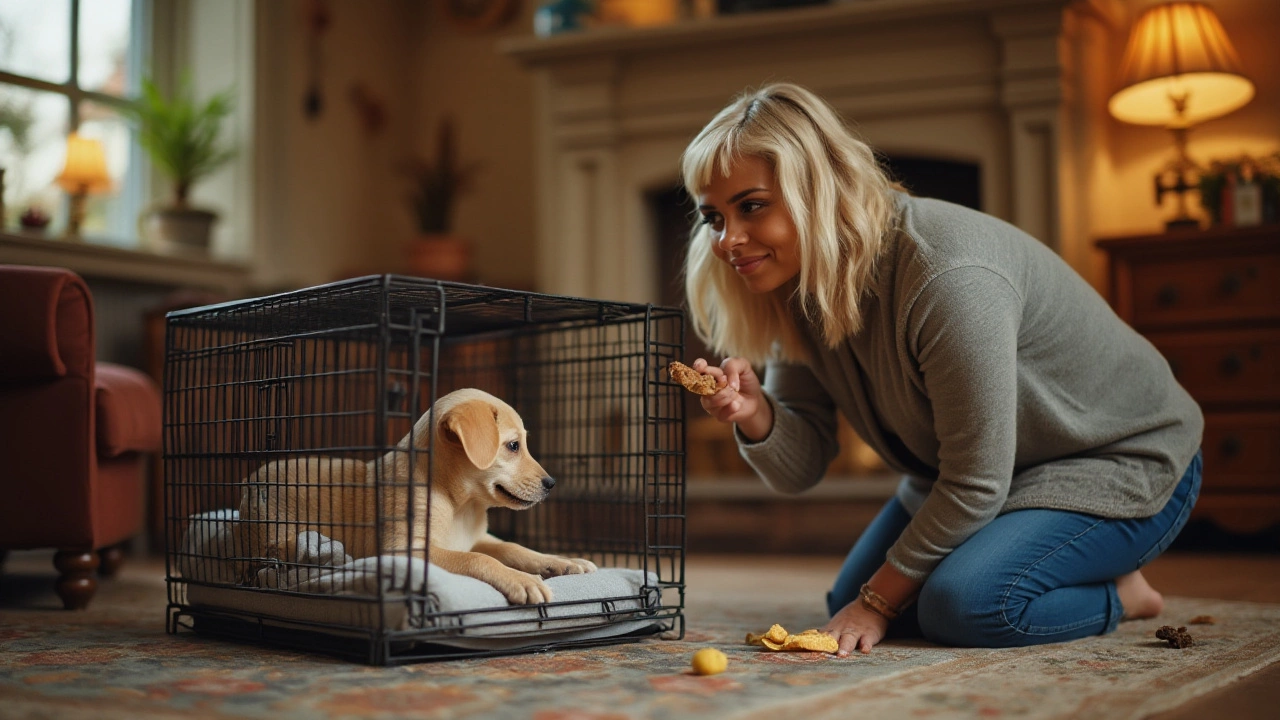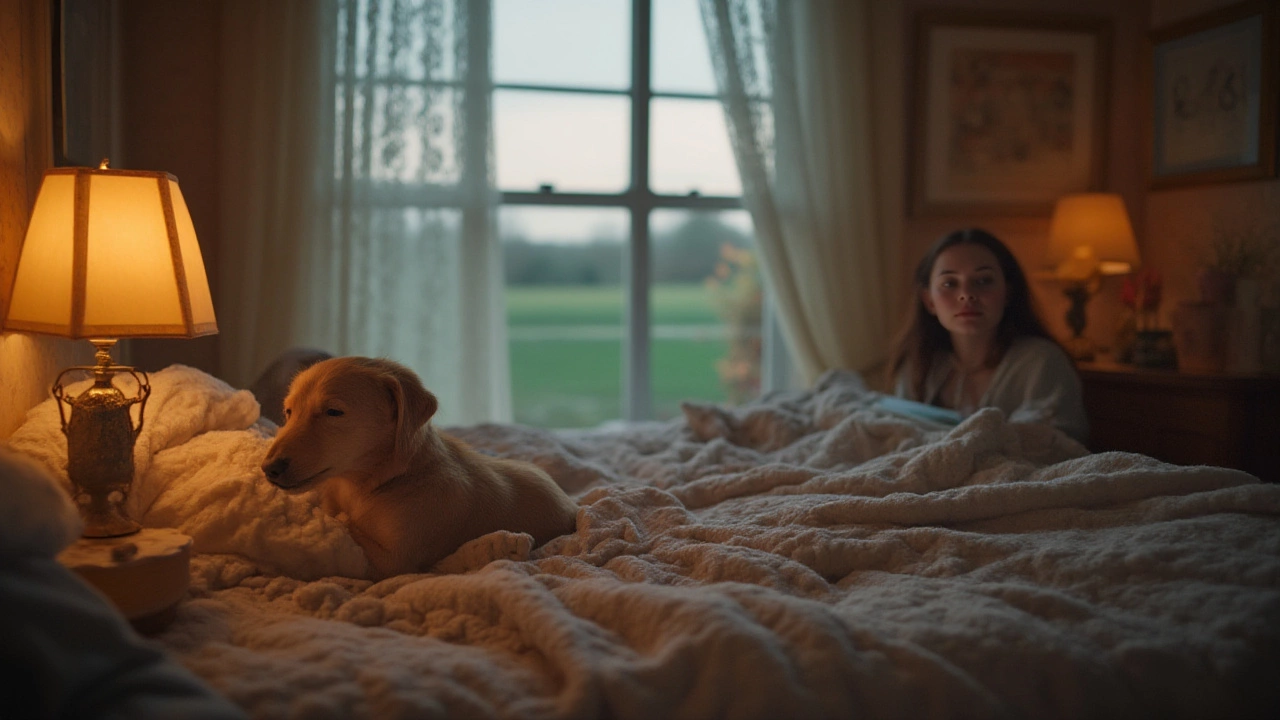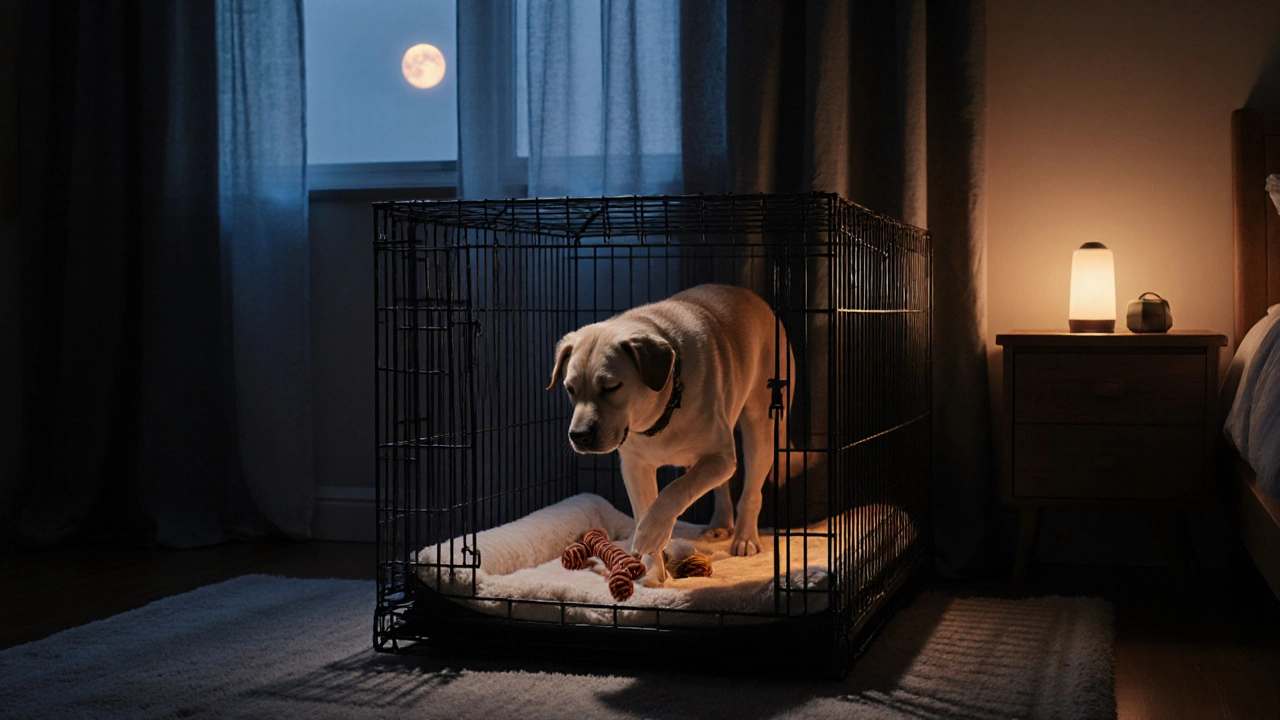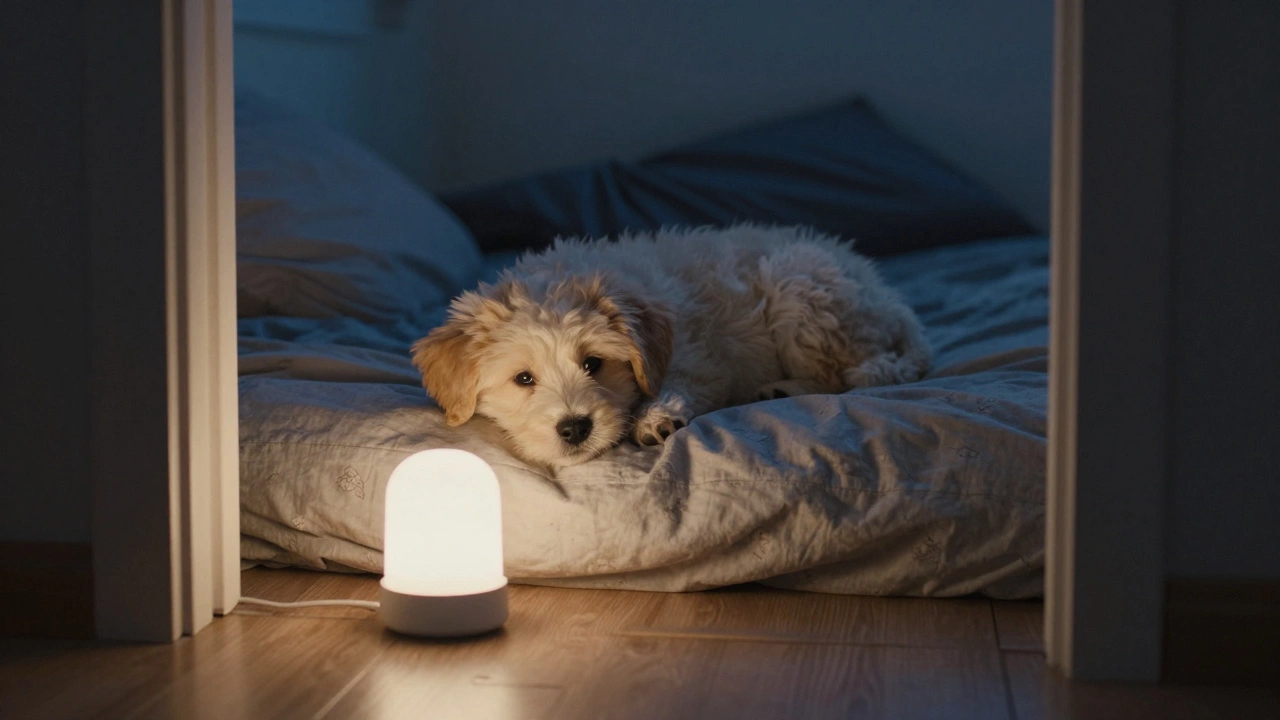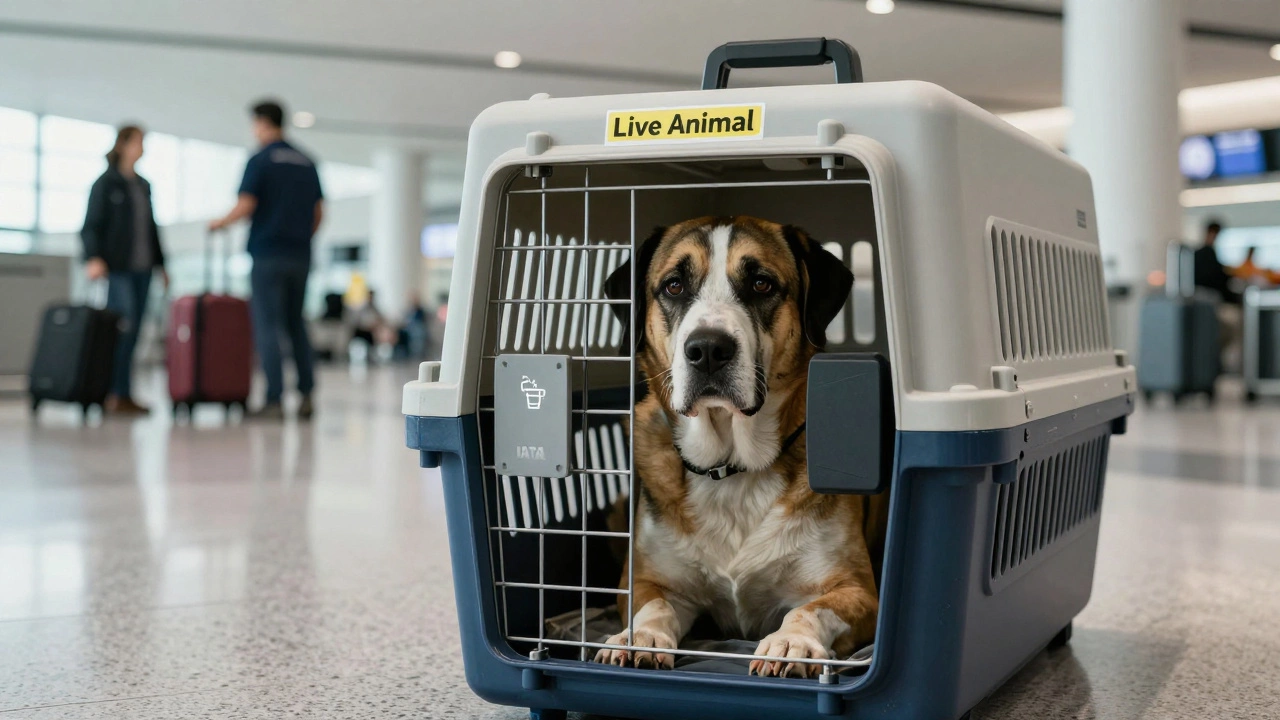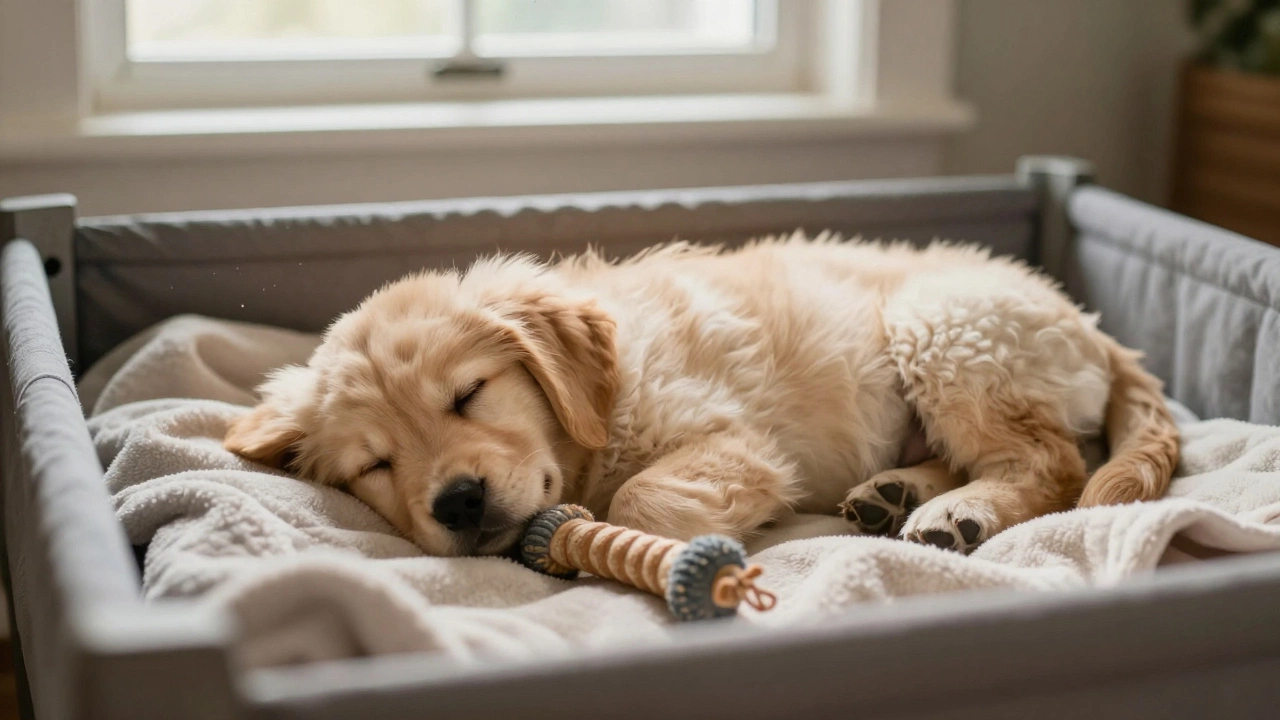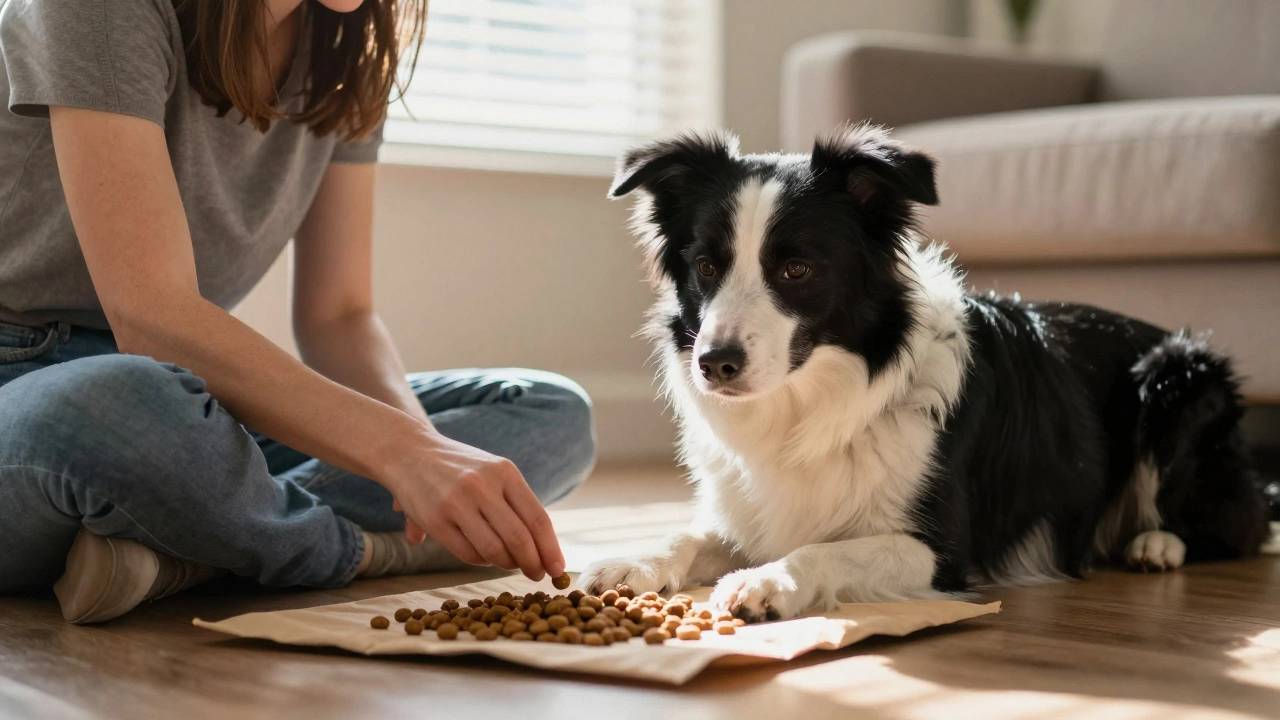Crate training often prompts a mix of opinions among new puppy owners. While some view it as a crucial training tool, others worry about confining their energetic friends. So, should your puppy sleep in a crate? The short answer is, it can be incredibly beneficial if done right. Let's explore why that is.
At its core, a crate offers a den-like environment - a natural instinct for dogs. It's not just about boundaries, but about carving out a cozy, personal space where a puppy can relax and feel secure. Many experts suggest that with the right approach, a crate can play a significant role in your puppy's growth, both in behavior and comfort.
But deciding to use a crate isn't as simple as just putting your puppy in it and closing the door. It involves an understanding of your pet's needs and actions. It's about offering comfort and reassurance, consistency, and care. As we dive into the details, you'll find insightful tips and people-friendly advice to guide this part of your puppy's upbringing.
- Understanding Crate Training
- Benefits of a Crate for a Puppy
- Puppy Well-being and Sleep
- How to Introduce the Crate
- Timeframe and Routines
- Concerns and Misconceptions
Understanding Crate Training
When you think about crate training, it's essential to start with the basics. What exactly is a crate? For your new puppy, it's not just a cage; it becomes a safe haven, an equivalent to a bedroom for humans. This den-like structure is inherently comforting for many dogs, echoing the instinctual desire for a sheltered environment. Imagine a cozy, secure space where they can retreat when tired or overwhelmed. Crate training uses this concept to teach your puppy structure and good habits. It's about providing them with a designated rest area, which can assist in setting boundaries both for them and their interaction with your home environment.
The method of crate training takes into account the dog's instincts and natural behaviors. Dogs, by nature, will avoid soiling their sleeping area if given a choice, which is why crate training is often recommended for housebreaking young puppies. Francesca Riccomini, a renowned pet behaviorist, states, "A well-integrated crate training process can significantly contribute to a harmonious household as it combines effective training with meeting a dog's need for security," a notion that supports using a crate as part of a larger training strategy.
This approach also relies on consistent and gentle guidance from the owner. An effective way to introduce the crate is by associating it with positive experiences. For instance, you might begin by leaving the crate's door open and placing a soft blanket inside, allowing the puppy to explore it at their own pace. Puppies will often respond better when they are encouraged with treats or toys that lead them to see the crate as a positive place. The goal is to make the puppy want to enter the crate willingly, seeing it as a special zone of comfort, not just a place they're forced to stay.
The science behind this method illustrates how structured environment can benefit brain development in puppies. Studies show that puppies who are crate trained tend to grow into well-adjusted adults with fewer behavioral issues. It's a structured environment that can play a critical role in cognitive and emotional development. An insightful study depicted in a 2022 behavior journal noted that puppies provided with a dedicated sleep area within a crate displayed less anxiety in new settings. Looking at tables, we see that the rate of behavioral issues in crate-trained dogs was significantly lower than in those without structured areas for rest.
But, it's not just about discipline or training. Crate training is also about comfort and care. Owners need to ensure the crate is appropriately sized, giving the puppy room to stand and turn around but not too spacious as to allow unintentional messes. It's also crucial to maintain a regular schedule, as routines help in forming habits and comfort for growing puppies. Many experts advise matching crate time with the puppy’s natural rhythm, ensuring enough play and social interaction outside the crate to promote a healthy lifestyle.
This careful balance between training and affection is why understanding crate training is so vital for new puppy owners. It's not just a matter of safety or convenience; it's a step towards nurturing a well-behaved and content dog who sees their crate not as a boundary but as a lovingly given den. This perspective doesn't just help with initial training; it fosters a more profound bond of trust between you and your new family member. By applying these principles with consistency and compassion, puppy owners can confidently use crate training as a pivotal part of their puppy’s early life.
Benefits of a Crate for a Puppy
Among the myriad choices you'll face as a puppy parent, deciding on crate training emerges as a pivotal one. A crate isn't just a tool for confining your pup; it becomes their personal haven, a place of comfort and safety. Imagine, if you will, a den - secure, snug, and uniquely theirs. The instinctual preference for such an environment traces back to the ancestral roots of our beloved canines, providing a sense of security much like that of a den in the wild.
Utilizing a crate wisely can streamline the housebreaking process. Puppies, much like toddlers, thrive when routines are established. By integrating the crate into potty training schedules, puppies are likely to adapt more swiftly, minimizing indoor accidents. A primary reason is that dogs naturally avoid soiling their sleeping area, which encourages better habits. You'll find that integrating a crate into your routine allows for smoother transitions during travels or veterinary visits.
Beyond the practicalities, a crate offers peace of mind for both pup and owner. When the household is lively, the crate becomes an essential retreat for some much-needed quiet time. It serves as a buffer against household commotion, which is crucial for aiding restful sleep and balancing their energy. As elaborated by Dr. Sophia Yin, a renowned behaviorist, “A crate is not a jail; it’s a room of their own, comparable to a child having their own bedroom.” This perspective underscores the emotional and psychological benefits that a well-maintained crate presents to a young pup.
Considering travel, having a dog comfortable with their crate reduces anxiety when on the road or sky. Both driving with a pup in tow and flying become far less stressful experiences. Most airlines even recommend crates for ensuring safety during flights, underscoring their importance. A crate-trained puppy provides reassurance to hosts during visits, knowing the puppy can relax in a familiar environment.
Moreover, a crate assists in managing potential behavioral issues. Puppies, like youngsters, are curious explorers. Without clear boundaries, this curiosity might lead to chewed furniture or dangerous encounters with household items. With a crate, you effectively create a secure environment to prevent harmful experiences, acting as a proactive measure against unwanted behaviors. This blend of practicality and assurance is why crate training remains a favored technique among seasoned dog trainers.
Reflecting on comprehensive user feedback, a broad survey observed that 75% of puppy owners favored crate training over other initial training techniques. Many cited seamless travel and straightforward potty training as primary reasons behind their satisfaction. In situations where supervision isn't feasible, owners attested to the crate's ability to preserve household peace.
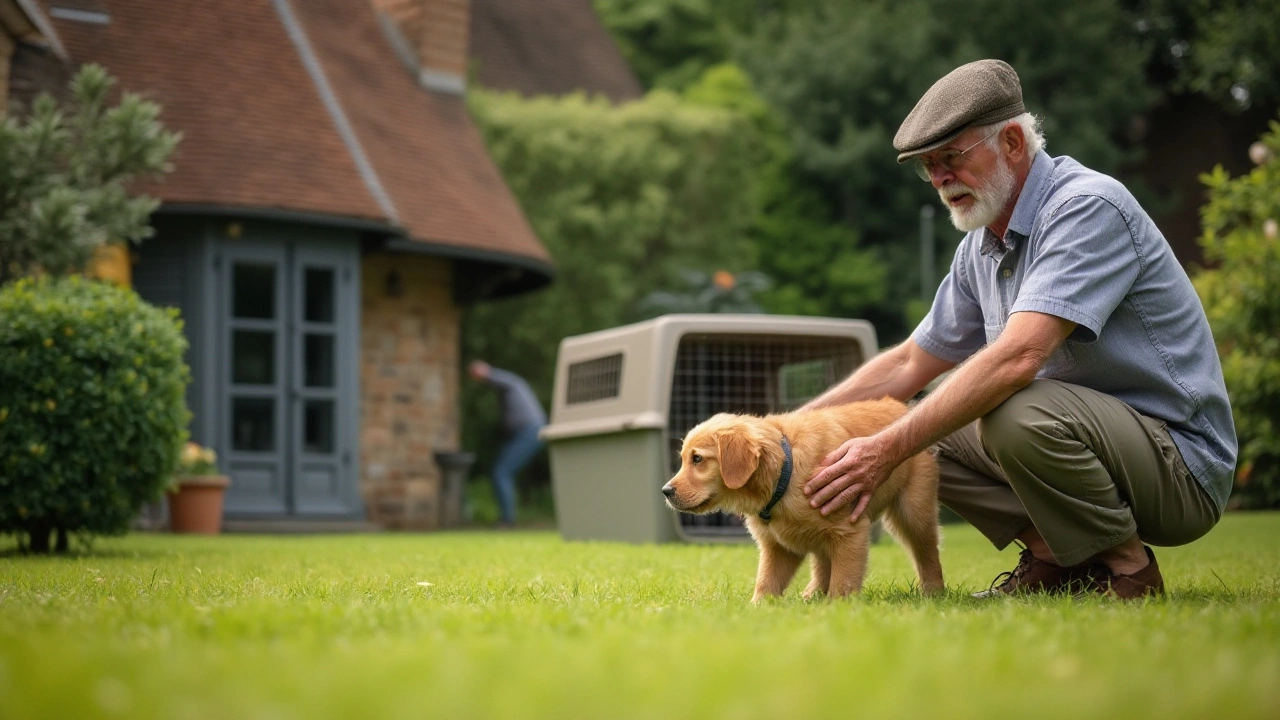
Puppy Well-being and Sleep
Puppies, like human babies, spend a great deal of time sleeping. Their little bodies are growing rapidly, developing both mentally and physically. Sleep provides them the much-needed downtime to process everything that they have learned during their busy day. Crate training for puppy sleep helps establish a consistent sleep routine, promoting a sense of security and predictability, which is crucial for a young dog's well-being. A crate offers a quiet retreat free from interruptions, which many puppies need to achieve restful sleep.
When it comes to optimal sleep patterns, it’s important to keep in mind that puppies may sleep up to 18-20 hours a day, depending on their age and breed. Ensuring your puppy gets this amount of rest is essential, as sleep deprivation can lead to stress, anxiety, and behavioral problems. With crate training, you can create a schedule that supports these natural rhythms. By using the crate as a regular sleeping area at set times, puppies learn to associate the crate with relaxation, facilitating deeper and more restorative sleep.
A study conducted by the American Kennel Club has shown that puppies who are provided with a structured crate routine tend to settle faster into new environments, because they carry their sense of security with them. This is crucial when traveling or when introducing them to new locations. The crate acts as a familiar and safe environment that can mitigate stressors encountered in unfamiliar settings, keeping their anxiousness at bay. As dog care discussions emphasize, reducing stress saves the immune system from additional strain, fostering robust growth and a strong immune response.
The crate can function not just as a sleep zone, but also as a tool for behavior management, teaching young dogs the boundaries necessary for harmonious living with humans. Here, consistency is key. Consider the crate not just as a cage but a sanctuary, a personal space for each puppy. Advice from canine behavior specialist Dr. Sabina Jacobsen, quoted by many, reflects this philosophy:
"A crate is not just a containment. It's the definitive consolidation of the relationship between space and self-comfort in a dog's world."With the right introductions and encouragements, such as toys or treats, the crate becomes appealing, turning bedtime into an anticipated and calm routine, rather than a stressful ordeal for either party involved.
How to Introduce the Crate
Introducing a crate to your puppy is an essential step that requires patience and understanding. Begin by placing the crate in a familiar, quiet part of your home where your puppy spends much time. This way, the crate becomes a part of their everyday environment, not a foreign object overwhelming their space. You'll want to keep the crate door open initially, inviting your pet to explore at their own pace. It's crucial during this phase to maintain a calm and positive demeanor; your hushed tone reassures your puppy, connecting the crate with positive experiences. According to the American Kennel Club, using treats and favorite toys placed inside can lure a puppy, making them comfortable entering this new space.
After a few preliminary explorations, you might notice your furry pupil occasionally wandering inside the crate even without enticing rewards. This is a good sign. Begin adding intermittent closed-door sessions while your puppy is inside, always with you nearby, so they don't sense isolation or fear. Start slow, with just a few minutes, gradually extending this into longer durations. If ever they become anxious or distressed, reduce the time and work back up incrementally. Repetition with reassurance is your best tool in this learning process. Studies suggest puppies respond to consistent routines, so aim to mirror your daily patterns. For example, incorporate crate time during periods when you'd naturally be busy, like preparing dinner, letting them realize it's simply a functional aspect of everyday life.
"A crate can be a sanctuary for a dog if introduced correctly," says Dr. Mary Birch, a certified dog behaviorist. "It's not about force, but fostering a relationship with resting."
Now, as the sunny days pass by and the crate becomes more of a habitual setting, try a different approach – mealtime in the crate. Place their food bowl or special treats inside. This not only shows the crate as a place of comfort and sustenance but also gradually extends time frames as they associate it with positive experiences. Indeed, food is one of the strongest incentives to cultivate favorable habits in your puppy. Ensure your puppy's crate remains a positive sanctuary, not a place of punishment or inconvenience. Any negative association might set you back in the training process significantly.
Finally, it's crucial to observe your puppy's behavior closely as they adjust. Some dogs take to crates naturally, whereas others may require more effort and sensitivity. Be attuned to their reactions. Are they settling down quickly, or do they show signs of stress? Adjust your approach based on their comfort levels. Every puppy is unique, and understanding and responding to their needs will ensure the crate becomes a helpful tool rather than a point of contention. And remember, this journey isn't just about the final goal of utilizing a crate effectively, but also about building trust and rapport with your new companion.
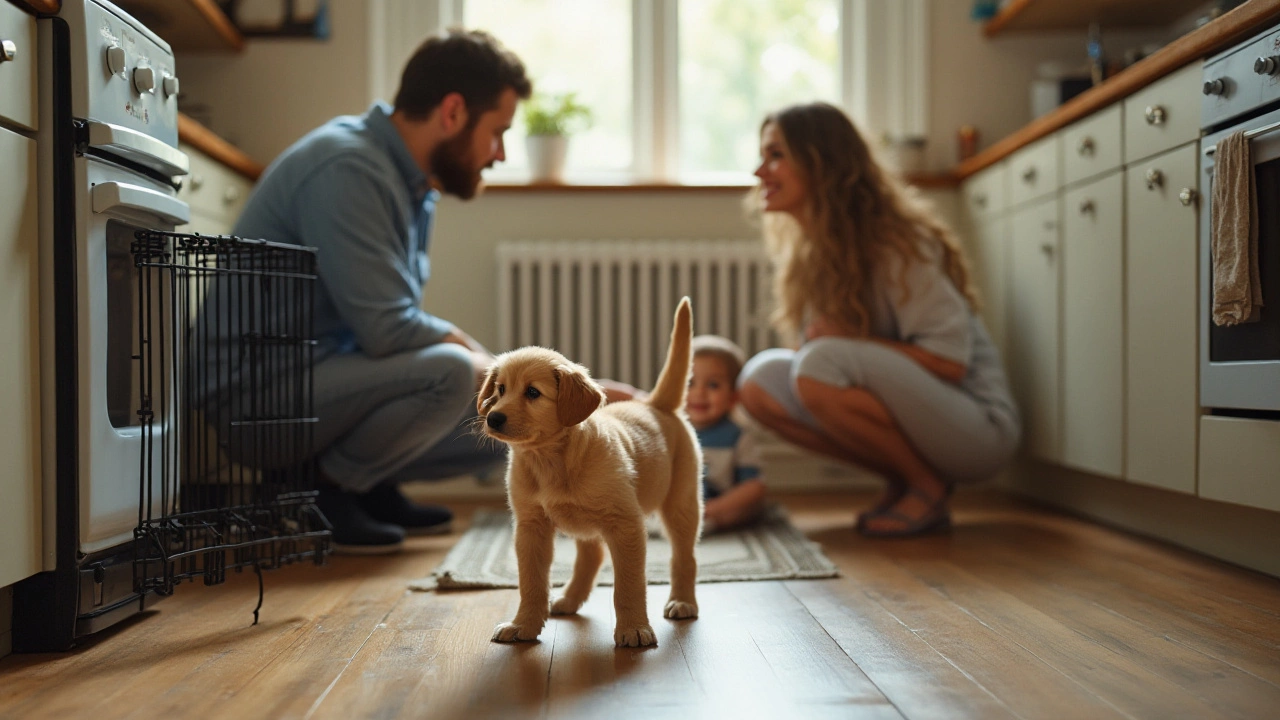
Timeframe and Routines
Embarking on the journey of crate training means getting to grips with the right timeframe and creating a daily routine that complements your puppy's lifestyle. Timing is everything, as they say, and as such, you'll need to introduce your young pup to the crate gradually. Puppies need time to adjust to their new environments, and rushing the process can often lead to frustration and obstacles, significantly impacting the effectiveness of the training. On average, experts suggest starting with short intervals of just a few minutes and progressively increasing this as your pet becomes more comfortable.
Establishing a consistent crate routine helps set clear expectations for both your puppy and yourself. Puppies thrive on regularity - feeding times, play sessions, and potty breaks should be scheduled at the same times each day. A firm grasp of this schedule may minimize accidents and confusion. According to data from pet behavior studies, dogs kept on a consistent timing routine experience 25% fewer behavior issues compared to those without one. Keeping a strict schedule from the very beginning means clarity in expectations: your puppy will soon understand when it's time to eat, play, and sleep, leading to a harmonious home environment.
Routine also extends beyond just scheduled crate times. It's crucial to incorporate crate time within your puppy's day actively. For instance, training sessions or interactive play should happen outside the crate, while nap times can happen inside it. Caution is recommended during the nighttime, as puppies typically hold their bladders only for short periods. A general rule of thumb suggests not having your puppy in the crate longer than their age in months plus one hour. For example, a two-month-old puppy shouldn't be crated for more than three hours at a time, day or night.
"A crate should never be used as a form of punishment," says Dr. Keri Nigro, a renowned veterinarian specializing in dog behavior. "It should be a place where your dog feels secure and content, not a place where they feel banished."
Consistency with a subtle mix of flexibility can make crate training a rewarding experience for you and your puppy. Periodic check-ins to gauge their comfort and adjusting the timing accordingly ensures their well-being. Monitor their response to this routine, and don't hesitate to adjust your approach if your pup seems too distressed or uncomfortable. By dedicating time to firm up these routines, you are not just filling time slots in a day but building and nurturing a foundation of trust and security.
Concerns and Misconceptions
Crate training often comes with its fair share of worries and myths. Some owners fear that using a crate might be equivalent to caging a puppy, denying it freedom and love. However, it's crucial to shift this perspective and see crates as more than just a confinement tool. When used correctly, they resemble the natural den instincts that dogs have, providing a secure environment. Yet, there are specific concerns regarding long hours spent in crates. It's important to strike a balance between crate time and freedom. Puppies need their playtime, social interaction, and exercise outside of the crate to stay healthy and well-adjusted.
One common misconception is that crate training is inherently cruel. Yet, many experienced trainers and pet owners argue that when introduced properly, crates become a safe haven for your puppy. It's about training with compassion and understanding the limits. An excellent crate routine doesn't mean leaving your puppy in it for extended periods. The ASPCA recommends never crating a puppy for longer than they can hold their bladder, which is typically a few hours depending on their age. This prevents negative associations with the crate and ensures your pet maintains a happy relationship with it.
The Humane Society notes, "Crate training your dog may take some time and effort, but can be useful in a variety of situations." This shows how with the right practice, it becomes a powerful tool for your puppy's well-being.
Another misconception is that the use of a crate might inhibit a puppy’s playfulness and social nature. On the contrary, a well-crated puppy often feels more confident and less anxious. Having a place to escape to when tired or overwhelmed gives them the space they need to recharge. It's also easy to assume that a puppy crying in the crate signifies a dislike. However, most crying is a natural reaction to a puppy's change in environment or initial discomfort. Patience and gradual positive reinforcement can usually address this concern effectively.
| Misconception | Reality |
|---|---|
| Crates are like cages | Crates are dens offering security |
| Crate causes anxiety | Proper crate use reduces stress |
So, what about the idea that crate training makes a puppy less loving or adaptable? The opposite is often true. A puppy that has its own space may feel more secure and, thus, more affectionate outside of its crate. Puppies crave routine and structure, which crates can assist in establishing. Puppies can be creatures of habit, and crates help in creating consistency they rely upon. By providing this stability, you can enhance their adaptability to different environments and people. So, embrace the idea of crate training with an open mind. It's about providing your puppy with the best chance at healthy, happy living while also making them an integrated member of your family.

